Lead generation is a crucial aspect of any business, and staying ahead of the curve is essential for success. As technology continues to evolve, so do the trends in lead generation. In 2025, businesses must adapt to emerging trends to stay competitive and generate leads effectively.
The evolution of lead generation technologies has given rise to new platforms and strategies that businesses can leverage to reach their target audience. Emerging platforms for lead acquisition, such as chatbots and social media, are becoming increasingly popular, and businesses must stay up to date with these trends to remain competitive. Personalization and targeting advances are also transforming the way businesses approach lead generation, allowing for more effective targeting and higher conversion rates.
Data privacy and compliance are also key considerations for businesses in 2025. With new regulations and privacy concerns, businesses must ensure they are collecting and using data ethically and in compliance with relevant laws. Integration of sales and marketing is also crucial for effective lead generation, as businesses must ensure their sales and marketing efforts are aligned. Interactive content for engagement and analytics and measurement are also key trends that businesses must consider in their lead generation efforts.
The Evolution of Lead Generation Technologies
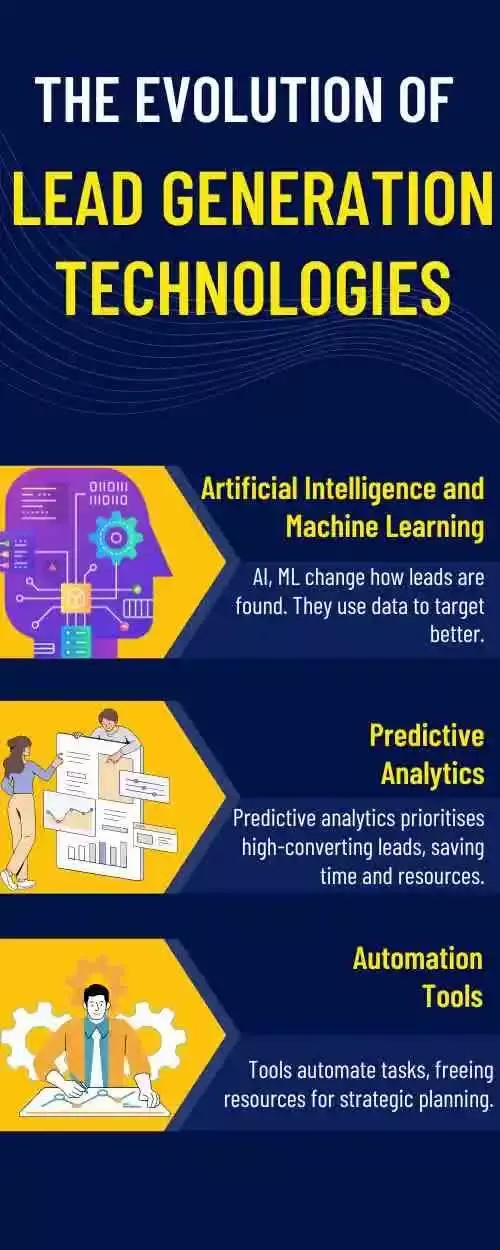
Artificial Intelligence and Machine Learning
Artificial intelligence (AI) and machine learning (ML) are transforming the way businesses generate leads. AI-powered tools can analyze large amounts of data to identify patterns and make predictions about which leads are most likely to convert. This helps businesses to focus their efforts on the leads that are most likely to result in sales.
ML algorithms can also be used to optimize lead generation campaigns. By analyzing data on past campaigns, ML algorithms can identify which tactics are most effective and make recommendations for future campaigns.
Predictive Analytics
Predictive analytics is another technology that is driving the evolution of lead generation. Predictive analytics tools can analyze data on past leads and use this information to make predictions about which leads are most likely to convert in the future.
By using predictive analytics, businesses can focus their efforts on the leads that are most likely to result in sales, rather than wasting time and resources on leads that are unlikely to convert.
Automation Tools
Automation tools are also playing an increasingly important role in lead generation. These tools can automate many of the repetitive tasks involved in lead generation, such as sending follow-up emails and scheduling appointments.
By automating these tasks, businesses can free up time and resources to focus on more strategic tasks, such as developing new lead generation campaigns and analyzing data on past campaigns.
In conclusion, the evolution of lead generation technologies is set to continue in 2025, driven by AI and ML, predictive analytics, and automation tools. By embracing these technologies, businesses can generate more leads, improve their conversion rates, and ultimately drive more revenue.
Emerging Platforms for Lead Acquisition
As the landscape of lead generation continues to evolve, businesses must stay on top of emerging platforms to capture the attention of potential customers. In 2025, there are several platforms that are gaining traction in the world of lead acquisition.
Social Media Innovations
Social media platforms have long been a staple for businesses looking to generate leads. However, in 2025, social media is set to undergo a major transformation. With the rise of virtual reality and augmented reality, businesses will be able to create immersive social media experiences that allow customers to interact with products in a whole new way. This will create new opportunities for lead generation as businesses can use these experiences to capture the attention of potential customers and guide them through the sales funnel.
Voice Search Optimization
Voice search is becoming increasingly popular with the rise of smart speakers and voice assistants. In 2025, businesses will need to optimize their content for voice search in order to capture the attention of potential customers. This means focusing on conversational language and long-tail keywords that are more likely to be used in voice search queries. Businesses that fail to optimize for voice search risk being left behind as more and more customers turn to voice search to find products and services.
Video Marketing Strategies
Video marketing has been a powerful tool for lead generation for years, but in 2025, it will become even more important. With the rise of live streaming and interactive video, businesses will be able to create more engaging and personalized video experiences for potential customers. This will allow businesses to capture the attention of potential customers and guide them through the sales funnel in a more effective way.
Overall, businesses that stay on top of emerging platforms for lead acquisition will be better positioned to generate high-quality leads in 2025 and beyond. By leveraging social media innovations, voice search optimization, and video marketing strategies, businesses can capture the attention of potential customers and guide them through the sales funnel in a more effective way.
Personalization and Targeting Advances

Dynamic Content
Dynamic content will be a key component of personalization in 2025. Dynamic content will allow businesses to customize web pages, emails, and other marketing materials based on the user’s behaviour, interests, and preferences. This will help businesses to create a more engaging and relevant experience for their customers, which will ultimately lead to more conversions.
Segmentation and AI
Segmentation and AI will also play a significant role in personalization in 2025. AI-driven personalization will be used to personalize campaigns at an unprecedented scale. From segmenting leads to predicting customer behaviour, AI will help businesses to create highly targeted campaigns that are tailored to the individual needs of each customer.
Segmentation will also be a crucial component of personalization in 2025. Segmentation will allow businesses to divide their audience into smaller groups based on common characteristics such as demographics, interests, and behaviour. This will help businesses to create more targeted campaigns that are tailored to the needs of each group.
Overall, personalization and targeting will be key trends in lead generation in 2025. By leveraging advanced data analytics, businesses will be able to create highly personalized campaigns that are tailored to the individual needs of each customer. With the help of dynamic content, segmentation, and AI, businesses will be able to create a more engaging and relevant experience for their customers, which will ultimately lead to more conversions.
Data Privacy and Compliance
 GDPR and New Regulations
GDPR and New Regulations
Data privacy and compliance will continue to be a top priority for lead generation in 2025. The General Data Protection Regulation (GDPR) has set a precedent for data privacy regulations worldwide, and organizations must ensure they are complying with these regulations to avoid hefty fines.
In addition to GDPR, new regulations are expected to emerge in 2025, and organizations must stay up to date with these regulations to ensure they are compliant. Gartner predicts that by 2025, 75% of the global population will have their personal data covered under privacy regulations. Therefore, it is imperative that organizations prioritize data privacy and compliance in their lead generation strategies.
Data Security in Lead Gen
Data security is a crucial aspect of lead generation, and organizations must ensure that they are taking the necessary measures to protect their customers’ data. This includes implementing strong data security protocols, such as encryption and two-factor authentication, to prevent data breaches.
Organizations must also ensure that they are partnering with reputable lead generation vendors who prioritize data security and compliance. This includes conducting due diligence on vendors and reviewing their data privacy policies to ensure they align with the organization’s values and compliance requirements.
In summary, data privacy and compliance will continue to be a top priority for lead generation in 2025. Organizations must ensure they are complying with regulations such as GDPR and implementing strong data security protocols to protect their customers’ data. By prioritizing data privacy and compliance, organizations can build trust with their customers and maintain a positive reputation in the industry.
Integration of Sales and Marketing
Effective lead generation in 2025 will require a seamless integration of sales and marketing efforts. This will be crucial in ensuring that the two departments work together to achieve common goals. The integration will involve the sharing of data, insights, and strategies to help generate more leads and ensure a higher conversion rate.
CRM and Lead Nurturing
One of the key strategies that will be used to integrate sales and marketing efforts is the use of CRM and lead nurturing. In 2025, businesses will need to have a robust CRM system in place to help capture leads and manage customer data effectively. The CRM system will also help in lead nurturing by providing insights into customer behaviour and preferences. This will help businesses to tailor their marketing efforts to the needs of their customers, resulting in a higher conversion rate.
Alignment Strategies
Another important aspect of integrating sales and marketing efforts is the use of alignment strategies. This involves aligning the goals, processes, and metrics of the two departments to ensure that they work together seamlessly. In 2025, businesses will need to develop alignment strategies that are focused on achieving common goals, such as increasing revenue and improving customer satisfaction. This will require a shift in mindset from both departments, with a focus on collaboration and communication.
Overall, the integration of sales and marketing efforts will be a key trend in lead generation in 2025. Businesses that are able to successfully integrate these two departments will be better positioned to generate more leads and achieve higher conversion rates. This will require a focus on CRM and lead nurturing, as well as alignment strategies that promote collaboration and communication between sales and marketing teams.
Interactive Content for Engagement

Quizzes and Polls
Quizzes and polls are a great way to engage with audiences and gather valuable data. By creating quizzes and polls related to your product or service, you can encourage engagement and gather information about your audience’s preferences and opinions. This information can then be used to tailor your lead generation campaigns to better meet the needs of your target audience.
Augmented Reality (AR)
Augmented reality (AR) is an emerging technology that allows users to interact with digital content in the real world. AR can be used to create immersive experiences that engage audiences and provide them with valuable information about your product or service. For example, a furniture company could use AR to allow customers to visualize how a piece of furniture would look in their home before making a purchase.
Webinars
Webinars are a great way to engage with audiences and provide them with valuable information about your product or service. By hosting webinars, you can establish yourself as an expert in your field and provide your audience with valuable insights and advice. Webinars can also be used to generate leads by requiring attendees to provide their contact information in order to participate.
Infographics
Infographics are a great way to convey complex information in a visually appealing format. By creating infographics related to your product or service, you can engage audiences and provide them with valuable information in a way that is easy to understand. Infographics can also be shared on social media, increasing your reach and engagement.
Videos
Videos are one of the most popular types of content on the internet, and for good reason. Videos are engaging, easy to consume, and can be used to convey a wide range of information. By creating videos related to your product or service, you can engage audiences and provide them with valuable information in a way that is easy to understand. Videos can also be shared on social media, increasing your reach and engagement.
In conclusion, interactive content is becoming increasingly important for lead generation in 2025. By incorporating quizzes and polls, augmented reality, webinars, infographics, and videos into your lead generation campaigns, you can engage audiences and provide them with valuable information about your product or service.
Analytics and Measurement
 ROI Analysis
ROI Analysis
Measuring the return on investment (ROI) of lead generation campaigns is crucial for businesses to determine the effectiveness of their marketing efforts. In 2025, lead generation campaigns will continue to rely heavily on data analytics and measurement tools to track campaign performance and identify areas for improvement.
ROI analysis involves tracking the cost of lead generation campaigns and comparing it to the revenue generated from those campaigns. This helps businesses to determine the profitability of their lead generation efforts. By analyzing the ROI of different campaigns, businesses can identify which campaigns are most effective and allocate resources accordingly.
To improve ROI analysis, businesses should focus on collecting accurate data and using advanced analytics tools to analyze that data. This includes tracking website traffic, conversion rates, and customer behaviour. By leveraging this data, businesses can gain insights into customer preferences and optimize their lead generation campaigns for maximum ROI.
Conversion Rate Optimization
Conversion rate optimization (CRO) is another important aspect of lead generation in 2025. CRO involves optimizing landing pages and other elements of a lead generation campaign to increase the likelihood of conversion. By improving conversion rates, businesses can generate more leads and increase revenue.
To optimize conversion rates, businesses should focus on creating high-quality landing pages that are optimized for user experience. This includes using clear and concise messaging, minimizing distractions, and making it easy for users to take action. Businesses should also test different landing page designs and messaging to identify the most effective options.
In addition to landing page optimization, businesses should also focus on optimizing other elements of their lead generation campaigns, such as email marketing and social media advertising. By using advanced analytics tools to track campaign performance and identify areas for improvement, businesses can optimize their lead generation campaigns for maximum effectiveness.
The Role of Content Marketing

SEO and Content Strategies
One of the primary ways that content marketing can contribute to lead generation is through search engine optimization (SEO). By creating high-quality content that incorporates relevant keywords and phrases, businesses can improve their search engine rankings and attract more traffic to their website.
To maximize the effectiveness of their content marketing efforts, businesses should focus on developing a comprehensive content strategy. This may involve creating a content calendar, identifying key topics and themes, and setting goals for each piece of content. By taking a strategic approach to content creation, businesses can ensure that their content is aligned with their overall marketing objectives and is optimized for maximum impact.
Thought Leadership
In addition to SEO, content marketing can also help businesses establish themselves as thought leaders in their industry. By creating content that addresses the latest trends and challenges in their field, businesses can demonstrate their expertise and position themselves as trusted advisors to their target audience.
To achieve thought leadership status, businesses should focus on creating content that is insightful, informative, and relevant to their target audience. This may involve conducting original research, interviewing industry experts, or sharing case studies and success stories. By consistently providing valuable content, businesses can establish themselves as go-to sources of information and build strong relationships with their target audience.
Conclusion
In conclusion, lead generation in 2025 is expected to evolve and adapt to the latest technological advancements and consumer behaviour. The use of AI and machine learning is expected to become more prevalent in lead generation strategies, allowing businesses to personalize their approach to potential customers and increase conversion rates.
In addition, social media is expected to remain a key player in lead generation, with businesses leveraging social media platforms to engage with their target audience and build brand awareness. However, it is important for businesses to stay up-to-date with the latest social media trends and algorithms to ensure their efforts are effective.
Moreover, businesses should also focus on creating valuable and informative content that addresses the pain points and needs of their target audience. By providing valuable content, businesses can establish themselves as thought leaders in their industry and attract potential customers.
Finally, businesses should also prioritize lead nurturing and follow-up to ensure that potential customers are engaged and remain interested in their products or services. By implementing these strategies, businesses can stay ahead of the competition and generate high-quality leads in 2025.
🚀 Revolutionise Your Online Presence Using Our Expert Digital Marketing Solutions, Fueled by an Analytical Strategy That Produces Tangible Outcomes. Enhance your brand’s exposure and engage with your audience at an unprecedented scale.
Frequently Asked Questions
 What innovative strategies are companies adopting for B2B lead generation in 2025?
What innovative strategies are companies adopting for B2B lead generation in 2025?
In 2025, companies are adopting various innovative strategies for B2B lead generation. One of the most popular strategies is hyper-personalization, which involves leveraging advanced data analytics to tailor marketing messages to individual prospects. Another strategy is account-based marketing (ABM), which focuses on targeting high-value accounts and engaging decision-makers through targeted campaigns.
How has demand generation evolved from 2024 to 2025, and what are the implications for businesses?
Demand generation has evolved significantly from 2024 to 2025. Businesses are now using a more integrated approach to demand generation, combining inbound and outbound marketing strategies to attract and engage prospects. The rise of AI and machine learning has also enabled businesses to automate demand generation processes and personalize marketing messages at scale.
What are the key factors driving successful pipeline generation strategies in 2025?
The key factors driving successful pipeline generation strategies in 2025 include data-driven marketing, hyper-personalization, and account-based marketing. By leveraging advanced data analytics, businesses can gain insights into their target audience and create personalized marketing messages that resonate with prospects. Account-based marketing enables businesses to focus on high-value accounts and engage decision-makers through targeted campaigns.
What role does technology play in enhancing lead generation processes for the coming year?
Technology plays a critical role in enhancing lead generation processes in 2025. AI and machine learning are being used to automate lead generation processes and personalize marketing messages at scale. Marketing automation platforms are also being used to streamline lead generation processes and improve lead nurturing and conversion rates.
How can businesses effectively increase their B2B sales through modern lead generation techniques?
Businesses can effectively increase their B2B sales through modern lead generation techniques by adopting an integrated approach to demand generation. This involves combining inbound and outbound marketing strategies to attract and engage prospects, leveraging advanced data analytics to gain insights into their target audience, and using personalized marketing messages to convert leads into customers.
What best practices are emerging for nurturing and converting leads in a 2025 market landscape?
The best practices for nurturing and converting leads in a 2025 market landscape include using personalized marketing messages, leveraging advanced data analytics, and adopting an account-based marketing approach. By focusing on high-value accounts and engaging decision-makers through targeted campaigns, businesses can improve their lead nurturing and conversion rates and increase their B2B sales.
- The Importance of Local SEO for Small Businesses and How an Agency Can Help - 26 April 2024
- Ultimate Guide to Content Marketing for Accountants: Strategies, Tips & Examples - 23 February 2024
- Social Media Marketing For Accountants | 2Stallions - 22 February 2024
 Singapore
Singapore  Singapore
Singapore Malaysia
Malaysia


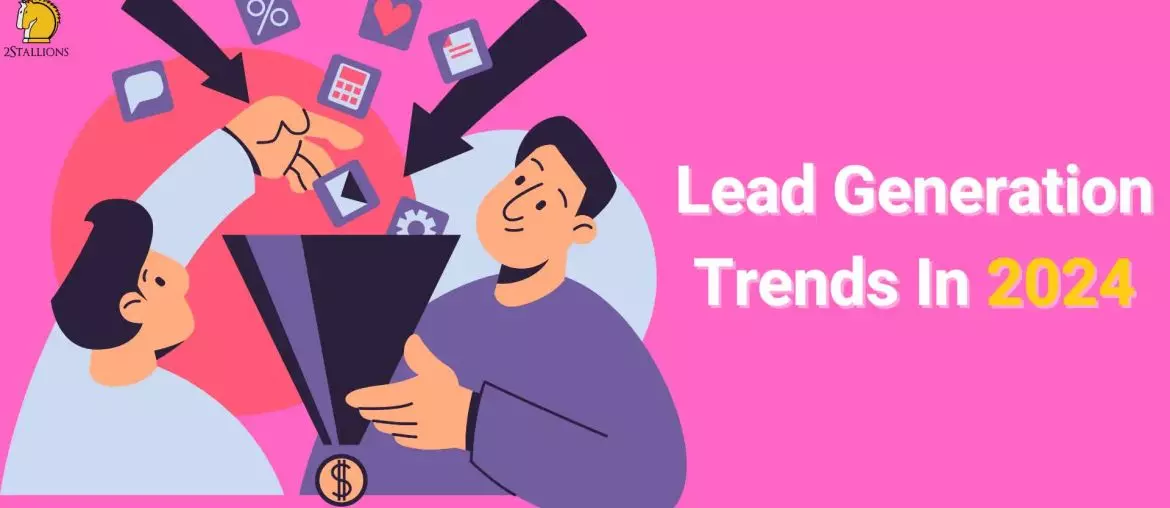
 GDPR and New Regulations
GDPR and New Regulations
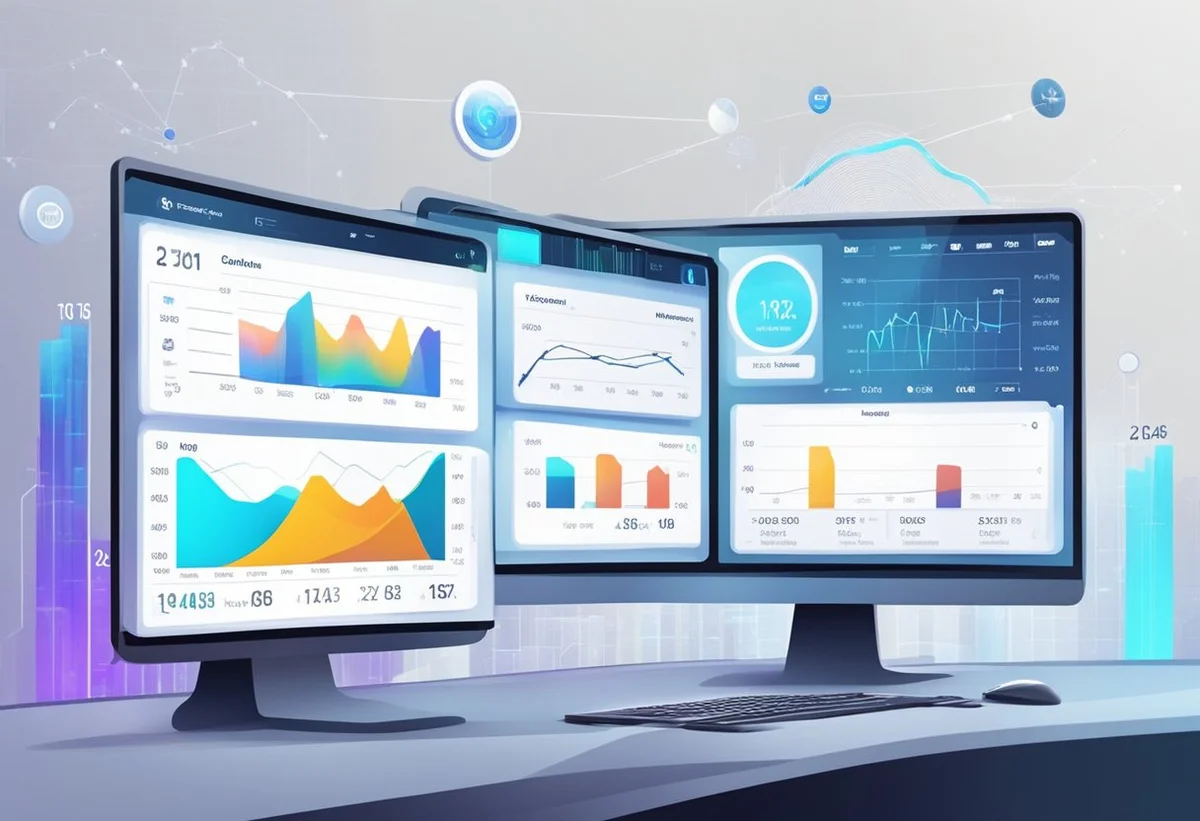 ROI Analysis
ROI Analysis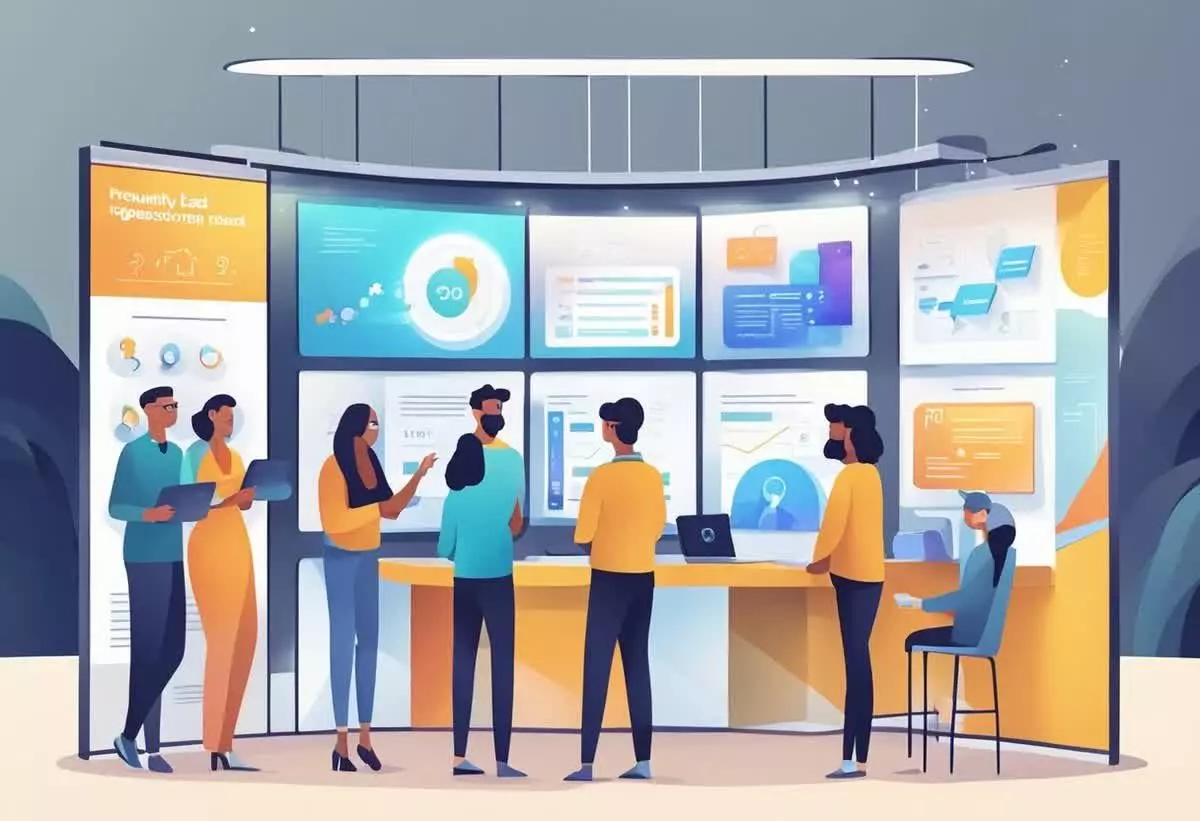 What innovative strategies are companies adopting for B2B lead generation in 2025?
What innovative strategies are companies adopting for B2B lead generation in 2025?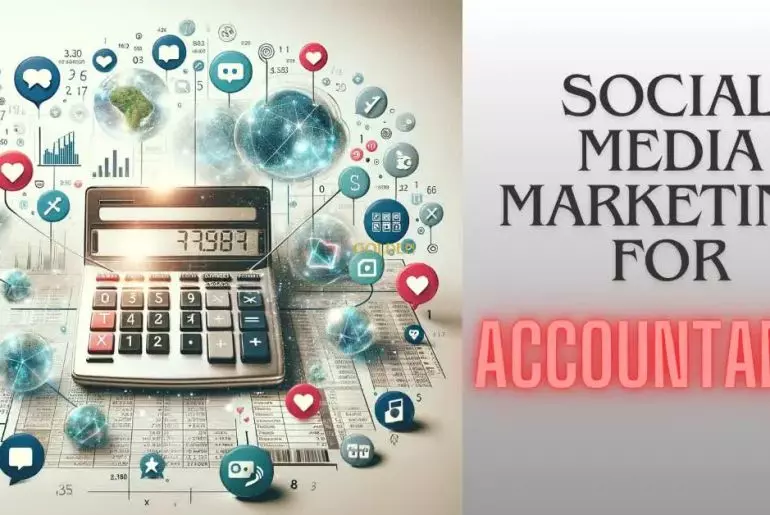
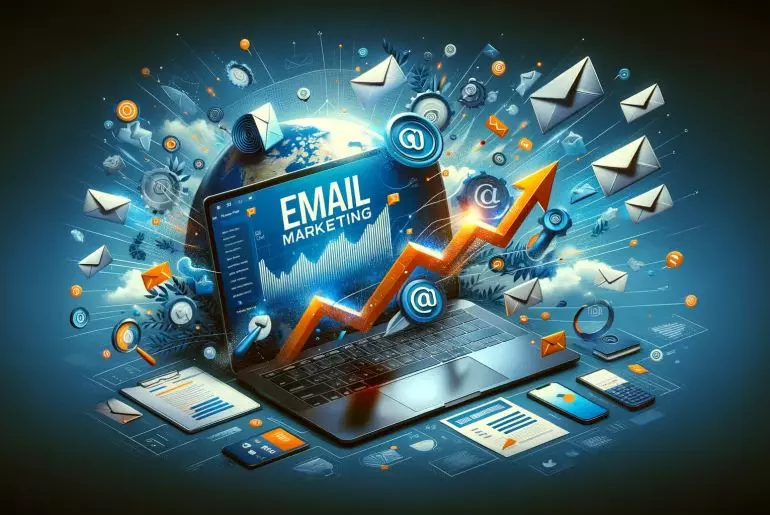
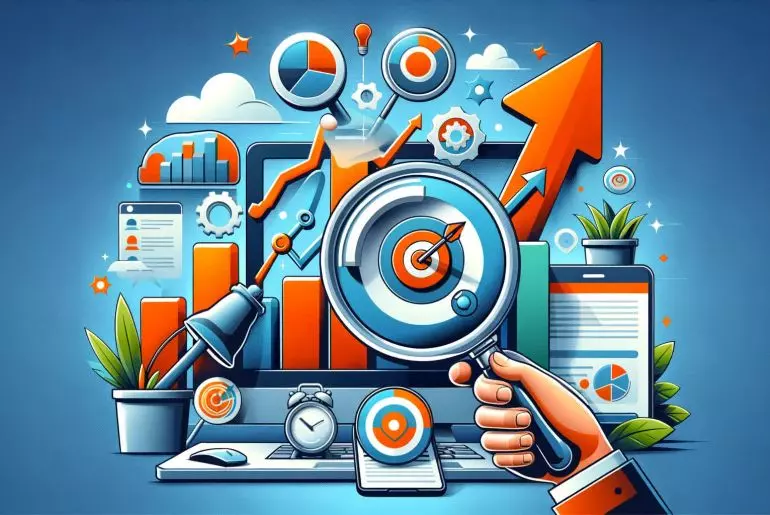
Comments are closed.